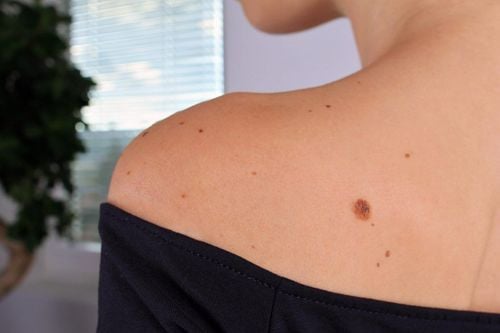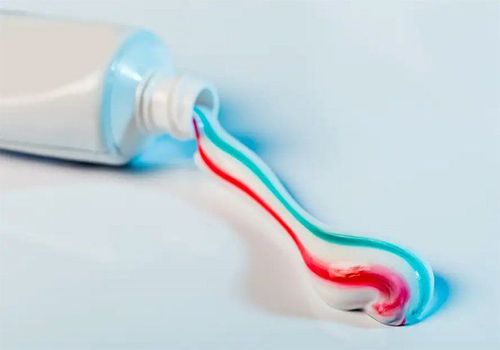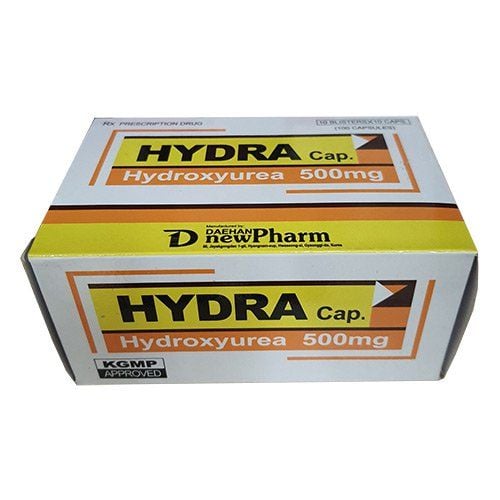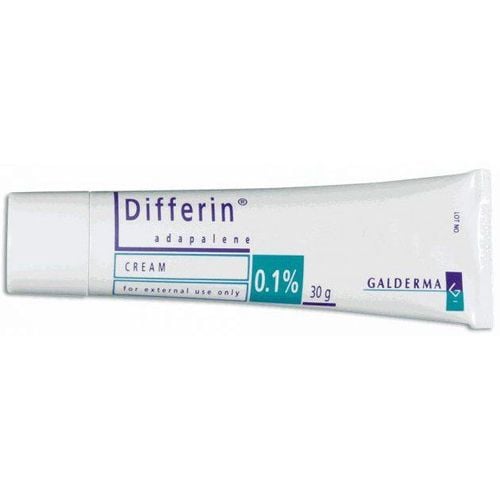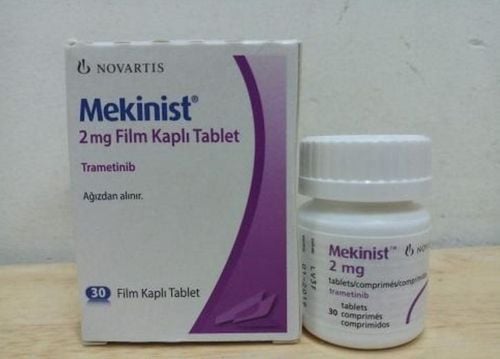This is an automatically translated article.
Most moles are nothing to worry about. But sometimes, your doctor will recommend removing a mole because of the risk of it developing into cancer. In other cases, the patient may want to remove the mole, or burn it with electricity for cosmetic reasons or because the mole is in a obstructed position. Laser removal or electrocautery, provided by a trusted medical facility, is a great option. Read more articles below to know about the notes when burning moles to be safe, not scar, not grow back.1. How to remove moles
Moles are common and normal growths on the skin. Each person can have more than one mole on his or her face and body. Most moles are harmless and do not pose a health concern, so you may not need to remove a mole unless you feel it is affecting your aesthetics, appearance, or if it is irritated. Due to rubbing against clothing, mole removal is an option.
However, there are some cases where moles that need to be considered for removal are moles that have shown a change in the color, size or shape of the mole as this could be a sign skin cancer report. So when we see a change, we should see a dermatologist to check the health.
Removal of a mole is different from a mole biopsy. It is designed to completely remove moles from the skin in a way that minimizes scarring and creates a smooth, discreet finish. Moles are classified as brown or black skin growths caused by an aggregation of skin pigment cells, called melanocytes. They can be raised on the surface of the skin or flat or appear anywhere on the body.
We can use a variety of techniques to safely and effectively remove moles anywhere. The procedure is virtually painless for nearly all patients thanks to a local anesthetic, and the recovery process sometimes requires no downtime. Above all, the permanent solution to common cosmetic concerns and performed by a qualified and experienced doctor is mole removal. This will make our skin more beautiful than ever and increase our confidence every time we appear in front of people. While one of the main benefits of mole removal is cosmetic, our main concern is always our long-term health. Moles can become cancerous, and if the condition is not diagnosed quickly, the affected cells can spread to other parts of the body. Removing moles can stop the spread of cancerous and precancerous cells. Mole removal can be done on anyone, skin type and color, and although people with lighter skin may be more susceptible to moles, it is important for everyone to take care of their skin. with regular health check-ups.
Some websites offer “do it yourself” tips for removing moles at home. Unproven methods will work, and some in particular can be dangerous. That's why we should talk to our doctor about our options before trying any home remedies for moles. Here are some home remedies:
Burn moles with apple cider vinegar Apply garlic penetrate the mole to break down the structure from the inside Destroy the cells inside by applying iodine to the mole Use scissors or a razor blade to cut the mole Some other home remedies can remove the mole such as :
A mixture of baking soda and castor oil Use banana peel Use frankincense oil Tea tree oil Use hydrogen peroxide Use aloe vera Use flaxseed oil Also, pharmacies and online stores sell ice cream mole remover. To use this cream, you first shave the upper part of the mole. Then apply the cream to the mole. The products advertise that within a day of applying the cream, scabs will form. When the scab falls off, the mole will come off with it. There are some safer ways to hide moles that are makeup, girls often wear makeup and this is also considered a good way. If you have a hairy mole, it is safe to clip or pull out your hair.
However, home mole removal methods sound quite easy and convenient but there is no evidence that home treatments for mole removal and some of them can work. safe. Several studies have reported side effects of mole removal creams available in pharmacies and online stores. These creams can cause thick scarring in the area where the mole is. The method of removing moles by cutting them with a sharp object such as scissors or a razor blade also carries many risks. Removing any growth increases the risk of infection, especially if the tools we use are not properly cleaned. can create a permanent scar at the site of mole removal. Another risk of removing a mole yourself is that we may not be able to tell if a mole is a sign of skin cancer. A mole can also be melanoma. If the mole is not checked by a dermatologist and it is cancerous, it can spread throughout the body and be life-threatening.

Phần lớn các nốt ruồi đều vô hại, không cần tẩy nốt ruồi trừ khi nốt ruồi đó ảnh hưởng tới thẩm mỹ
2. Is electric mole removal or mole removal really effective?
Current methods of mole removal:
The first is a laser mole removal method: the laser will "vaporize" the mole tissue, remove pigment cells in the epidermis and destroy pigmentation. located deep under the skin. The next method is Electrocautery: After several treatments, the electric current will destroy the cell tissue of the mole, but also easily damage the surrounding healthy skin. Method of using chemical dots on moles: Should only be applied to benign, small and shallow moles. However, complications that are easy to leave are concave or keloid scars because chemicals are corrosive, which can cause skin burns. Minor surgery method: This method is suitable for large and raised moles on the skin, dark color or deep under the skin. Before or after minor surgery, the doctor will conduct an examination and test to see if the mole is malignant or not. The depth of the incision and the area of minor skin surgery depend on the location and size of the mole and whether the mole is benign or malignant. See a dermatologist if you want to burn moles with electricity or other necessary methods to remove moles, moles that make us feel uncomfortable. And definitely see a doctor if the mole has changed, it could be a sign of cancer. Your doctor may do a biopsy - taking a small part of the mole to examine under a microscope to see if it's cancerous. Dermatologists use two safe and effective methods of burning moles. With surgical excision, the doctor will numb the area around the mole and remove the entire mole. The doctor then sutured the wound. With surgical shaving, the doctor first numbs the area around the mole and then uses a blade to shave the mole. Your doctor will not need stitches or sutures with this method. With either method, your doctor can check your mole for some form of cancer. If the mole has changed color, size, or shape, or if it has crusted over, see a dermatologist. Because it can be a sign of melanoma, the most dangerous type of skin cancer in humans. The doctor will examine and remove the mole if necessary.
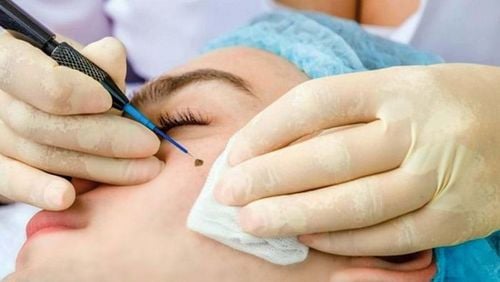
Hãy đến gặp bác sĩ da liễu nếu muốn loại bỏ nốt ruồi khiến chúng ta cảm thấy khó chịu
3. Note when burning moles for safety, no scars, no regrowth
After burning a mole or removing a mole, the skin is more or less damaged and a significant amount of cells is reduced. Therefore, it is essential to apply the drug to regenerate and restore the skin. We should consult the treating doctor and they will give advice such as:
Use an antibacterial cream or medicine to disinfect the skin: After removing the mole, this is when bacteria easily attack to do damage the skin and leave many serious consequences. Therefore, in order to protect the skin in the best way, the use of topical creams and antibiotics and antibacterial drugs is extremely important. In addition, it is necessary to use creams with skin regeneration effects, creams containing ingredients such as vitamins C, E, and hyaluronic acid have the ability to increase the rapid production of collagen and elastin to restore the skin. Thanks to that, the structure of the skin is reset, the skin becomes smoother and stronger from deep inside.
After removing the mole, the doctor will prescribe some drugs with antibacterial and skin-regenerating properties. Therefore, to bring about any smooth, even skin tone and natural healthy glow, skin care should be taken as prescribed by a doctor.
And one important thing is not to forget to apply sunscreen: daily sunscreen application is also very necessary for the skin. But for those who have just finished removing moles, applying sunscreen is even more necessary. The reason is because after removing moles, the skin will be weak and vulnerable. When UV rays penetrate the skin, it breaks down the links under the skin, causing an increase in melanin pigments, causing melasma, freckles and aging. Therefore, it is necessary to apply sunscreen regularly and pay attention to choosing a sunscreen with mild ingredients to ensure safety and not cause irritation to the skin so that the skin care process after mole removal is effective. Best
In addition to the skin care notes after laser mole removal, we need to pay attention to the daily diet so that the skin after mole removal is restored as quickly as possible. The extremely important thing after mole removal is skin care, you need to add groups of vitamins and other nutrients to help promote effective skin recovery.
Please dial HOTLINE for more information or register for an appointment HERE. Download MyVinmec app to make appointments faster and to manage your bookings easily.
Reference sources: healthline.com, advanceddermatologyctr.com



